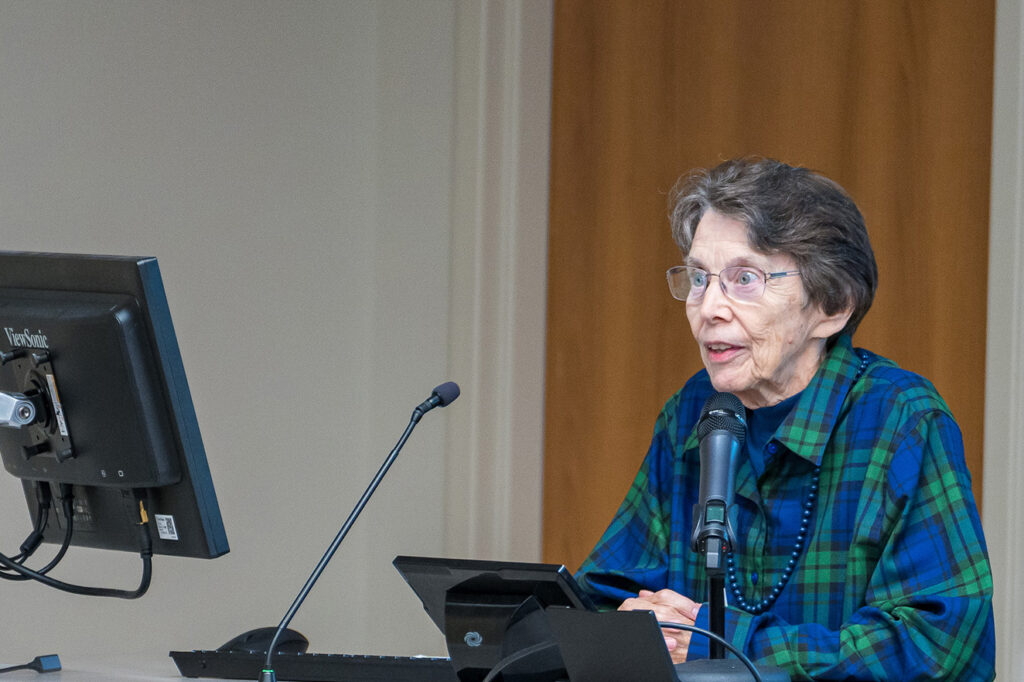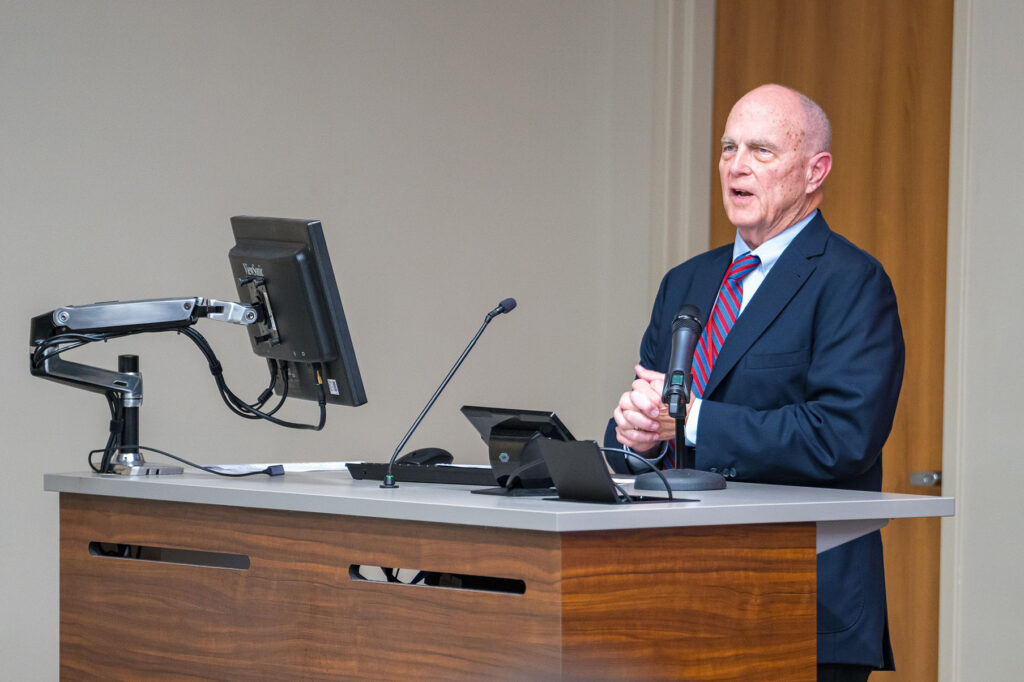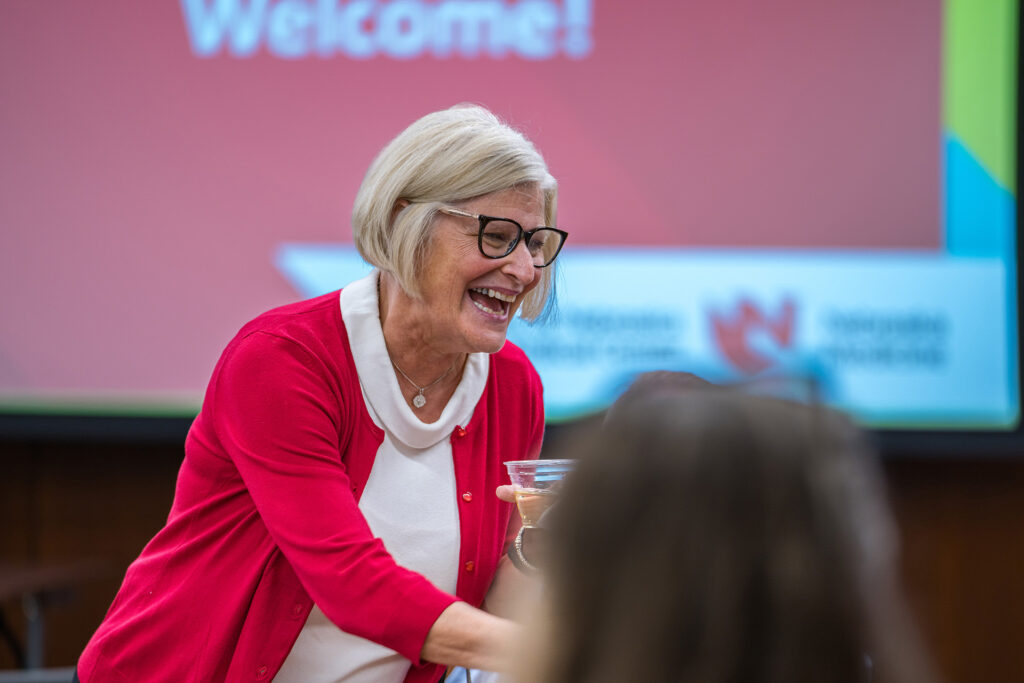Blood
Blood and bone marrow transplant program celebrates 40 years
The little room where it all started is still there. It looks different now, but the few people who led the humble beginnings of the blood and bone marrow transplant program can tell you right where it is. However, they’re more apt to tell you about the thousands of lives impacted by the program since it began in 1983.
That’s what brought many of those pioneers together Oct. 26 at the Fred & Pamela Buffett Cancer Center, to celebrate the accomplishments of the past and to continue charging into the future. The existence of the cancer center, as well as UNMC and Nebraska Medicine’s international reputation for excellence in cancer research, education and clinical care, has a lot to do with the work that started in that little room in University Tower.
“We wanted to try this new idea that wasn’t widely accepted, called ‘auto transplant,’ to use a patient’s own cells to allow for very intensive therapy. And to focus on lymphomas, which had not been a focus of transplant programs,” said James Armitage, MD, the Joe Shapiro Professor of Medicine and co-founder of the program. “We got a second room, then a third room, and finally we were clogging up the ICU, and they built for us a unit; we had a dedicated area.”

Ann Kessinger, MD, professor emerita, recalled how in 1986 the number of centers doing the types of transplants pioneered at the med center exploded around the world – based on clinical research conducted and proven at the medical center.
“How could Nebraska be part of that group? How could that happen? It did happen,” Dr. Kessinger recalled. “It happened because of the people working there and because they had faith in each other.”
One of the patients who benefited from that faith was Kurt Holmstrom. He received his transplant in 1988 at age 19. All these years later, what sticks with him the most is not the medical breakthrough that helped save his life. It was the care he received from the team. Holmstrom’s diagnosis came just two weeks after his father died. He became a patient in the hospital where he had said goodbye to his father just days before.

“Even now when I see the team, they come up, they hug me. It’s been 35 years,” Holmstrom told the group at the 40th anniversary event. “I have been through a lot, but I wouldn’t change a thing.”
Dr. Armitage recalled the importance of teamwork as the program grew. The treatments were innovative, new and constantly improving. That meant the need for regular conversations between everyone involved in the patients’ care – including the housekeeping team that was key to maintaining a safe environment for very vulnerable patients. “Everybody doing their best made it most likely the patient got to leave alive.”

“Your efforts, your enthusiasm made these 40 years possible,” said Therea Franco, who recently retired as vice president of operations for cancer. Franco was there at the beginning too, working out of a converted housekeeping closet in University Tower. “Together, this team has made this transplant program the envy of all other programs. Let this be an example of the power of the team.”
Over those 40 years, the number of autologous transplants, the type where patients’ own cells are used in their treatment, far outnumber the allogeneic transplants, which use donor cells. Continuous research and treatment have led to new breakthroughs in cellular therapy, such as CAR-T therapy. Julie Vose, MD, chief of hematology and oncology, said these treatments are here to stay and may lead to new treatments beyond hematology.
“All of this is the wave of the future. Our cellular therapy program is going to be at the cutting edge over the years, and we hope to continue to grow it exponentially,” Dr. Vose said.
Kyle Skiermont, PharmD, Nebraska Medicine vice president of operations, emceed the event and saw it as a way to bring together the program’s pioneers with the people continuing that work into the future.
“Nearly 6,500 people have received bone marrow transplants or CAR-T cell therapy at this medical center,” Skiermont said. “For 40 years, this program has demonstrated its commitment to ‘Serious Medicine, Extraordinary Care.’ ”
thEZ emtVTYT MZ
